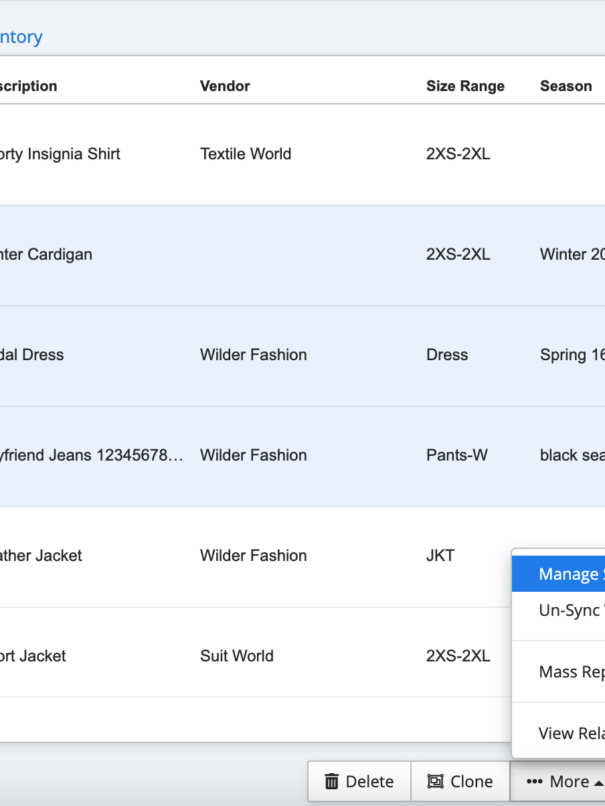If your company stores the goods it sells in a warehouse, warehouse inventory management is an important aspect of your supply chain management. It is crucial for keeping track of the products your company has in stock and making sure that your inventory levels are kept at ideal levels.
Understanding how to create and implement a warehouse management strategy is critical to staying on top of your goods, reducing loss, and satisfying customers by rapidly fulfilling orders.
In this post, learn more about the importance and benefits of warehouse inventory management, how to implement it, and more.
Photo by Adrian Sulyok on Unsplash
What is Warehouse Inventory Management?
Warehouse inventory management is a process that includes receiving, storing, tracking, and auditing stock in a warehouse. For instance, for the clothing industry, this would mean tracking the movement and location of clothes, shoes, accessories, jewelry, and related items within the warehouse.
In other words, warehouse inventory management is all about managing incoming and outgoing goods, as well as knowing where individual items are located in the warehouse.
Warehouse management also entails warehouse staff management, optimization of storage space and costs, and replenishment of inventory when predetermined minimum quantities are reached. All of this has a direct influence on fulfillment, delivery, and customer satisfaction.
Why is Warehouse Inventory Management Important
Here are several important reasons why businesses should prioritize warehouse inventory management:
1. Reduced Costs
Storage, fulfillment, and labor expenses can all be reduced with proper warehouse inventory management. Investing in a cloud based inventory management solution, automating activities to eliminate human error, and organizing inventory to speed up the picking and packing process are just a few of the ways to optimize your supply chain and boost your profits.
2. Increased Productivity
When inventory in your warehouse is properly recorded and maintained and manual tasks are automated, your employees will have more time to focus on more important duties like logistics and growth. Assisting your warehouse employees in becoming more productive will not only save you money but also ensure that orders are shipped at a faster rate and with increased accuracy.
3. Improved Accuracy
Speaking of accuracy, if your warehouse is not well-organized and managed, the fulfillment process will suffer complications and delays. The majority of order troubles arise from chaotic inventory, poor picking and packaging operations, and not enough stock control. You can dramatically enhance order accuracy and speed up order fulfillment by implementing warehouse management best practices and technologies.
4. Faster Shipping
The way you manage your warehouse inventory also has an impact on shipping efficiency. An automated shipping process allows you to boost shipping times, increase your output, handle a bigger volume of orders with ease, decrease shipping costs, and ensure higher order accuracy rate.
5. Increased Customer Satisfaction
Finally, a successful warehouse is one that fulfills customer orders timely and accurately. By investing in warehouse inventory management, you’ll enhance customer satisfaction by reducing shipping times, lowering shipping costs, and increasing order accuracy. Moreover, if a customer wants to exchange or return a product or there’s a problem with an order, a good warehouse system and inventory management will help you manage returns and refill items more rapidly.
Photo by TheStandingDesk on Unsplash
Best Methods and Practices for Warehouse Inventory Management
Having the above-listed benefits of warehouse inventory management, here are some methods and best practices that will help you implement such a system and make sure it runs smoothly.
1. Inventory Tracking
Inventory management software will automatically update each item’s status or location within the warehouse, thus smoothing out the operations. It will also let you know how many goods are ready for shipment, as well as when you should order more products based on projected volume.
Retail inventory management software includes features like traceability, which allows you to track items by serial number or lot, integrated barcoding, activity-tracking dashboard, expiration tracking, etc. These features will not only boost efficiency but also help prevent losses by making sure that nothing has been moved without permission.
2. Receiving
The process of restocking inventory in a warehouse is referred to as receiving. Inventory management and fulfillment can be made easier, more cost-effective, and more efficient with an efficient warehouse receiving procedure. Once inventory is stowed, retailers can track it in real-time, estimate inventory needs, set reorder points, and much more from a single dashboard.
3. Picking and Packing
Picking and packing refers to the process of taking your customers’ purchases and packing them into a shipping box. Your warehouse operations will run faster and more accurately if you have an efficient picking and packaging process in place. There will be fewer mispicks, decreased number of returns, and more satisfied consumers who get what they want when they want it. An effectively-managed picking and packing process will also save you time and money, as research has shown that processing orders takes about 70% of labor time!
4. Shipping
Getting parcels out for delivery with UPS, USPS, and FedEx, as well as putting bulky items or larger cargo into pallets to be delivered by LTL freight, are examples of warehouse management for shipping. By optimizing the shipping process, software for warehouse management eliminates the need for warehouse workers to “double-check” product availability prior to each shipment, allowing your company to improve accuracy, boost speed, and deliver high-quality service while keeping warehouse shipping costs low.
5. Reporting
A warehouse inventory management system should provide inventory and operational reports to help you determine the health of your warehouse and inventory management processes, but also find areas to improve efficiency and speed up delivery. This could include order fulfillment accuracy, number of orders fulfilled per hour to measure staff efficiency, number of orders delivered on time, etc. Reporting will also provide you with inventory forecasts and help you to better understand staffing requirements and labor management.
Photo by Remy Gieling on Unsplash
What Is the Difference Between Inventory and Warehouse Management?
Warehouse management and inventory management are two aspects of stock management.
Inventory management includes forecasting, ordering, receiving, and allocating goods. It provides information to calculate profit margins and sales trends, determines reorder points based on demand, shows the inventory record, and stores inventory availability status. Raw materials, components, and finished goods are all part of the inventory.
Warehouse management, on the other hand, is concerned with products stored in storage facilities and warehouses, as opposed to those used in the manufacturing process or kept in storefronts. It’s part of a broader inventory management system that tracks goods from point of acquisition to point of sale.
Warehouse management and inventory management are similar in that they both aid in the efficient movement of inventory from the supplier to the end-user. Each one entails stock storage, shipping, and reordering. In addition, both inventory management and warehouse management improve accuracy and productivity by using software, barcode tools, and RFID (radio frequency identification), and they both enable insight into all stock, whether for one warehouse or the entire firm.
The Bottom Line
From receiving and storing merchandise to completing and shipping orders, inventory and warehousing management have an impact on your entire supply chain. Inadequate warehouse inventory management can result in increased logistics expenses, disgruntled warehouse employees, more picking and packing errors, longer shipment times, and dissatisfied consumers.
By choosing to employ a warehouse management system, you increase your productivity in the warehouse and improve logistics. The precise activity records aid warehouse staff by making sure they know exactly what the next step in the process is. Because every product in the warehouse is tracked in real-time, inventory control is straightforward, and customers can rest assured that their orders will be fulfilled timely and accurately.







